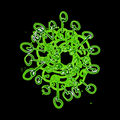Template:Selected anniversaries/October 1: Difference between revisions
No edit summary |
No edit summary |
||
| Line 28: | Line 28: | ||
||1902: Burton Wadsworth Jones ... mathematician born ... known for his work on quadratic forms. Pic: https://www.findagrave.com/memorial/8729240/burton-wadsworth-jones | ||1902: Burton Wadsworth Jones ... mathematician born ... known for his work on quadratic forms. Pic: https://www.findagrave.com/memorial/8729240/burton-wadsworth-jones | ||
||1904: Otto Robert Frisch born ... physicist and academic. | ||1904: Otto Robert Frisch born ... physicist and academic. Manhattan Project. Pic. | ||
||1905: John Robert Vernon Dolphin born ... engineer and inventor who joined the British Secret Intelligence Service and then became the Commanding Officer of the top secret Second World War Special Operations Executive (SOE) 'Station IX' where specialist military equipment was developed. During his time there his inventions included the Welman midget submarine and the Welbike Parachutists' Motorcycle. Pic search yes: https://www.google.com/search?q="John%2BRobert%2BVernon%2BDolphin" | ||1905: John Robert Vernon Dolphin born ... engineer and inventor who joined the British Secret Intelligence Service and then became the Commanding Officer of the top secret Second World War Special Operations Executive (SOE) 'Station IX' where specialist military equipment was developed. During his time there his inventions included the Welman midget submarine and the Welbike Parachutists' Motorcycle. Pic search yes: https://www.google.com/search?q="John%2BRobert%2BVernon%2BDolphin" | ||
| Line 34: | Line 34: | ||
||1909: Hans Motz born ... pioneering work at Stanford University on undulators which led to the development of the wiggler and the free-electron laser. Pic: https://outlet.historicimages.com/products/rse34067 | ||1909: Hans Motz born ... pioneering work at Stanford University on undulators which led to the development of the wiggler and the free-electron laser. Pic: https://outlet.historicimages.com/products/rse34067 | ||
||1910: José Enrique Moyal born ... physicist and engineer. | ||1910: José Enrique Moyal born ... physicist and engineer. Pic. | ||
||1910: Los Angeles Times bombing: A large bomb destroys the Los Angeles Times building in downtown Los Angeles, killing 21. | ||1910: Los Angeles Times bombing: A large bomb destroys the Los Angeles Times building in downtown Los Angeles, killing 21. | ||
| Line 40: | Line 40: | ||
||1911: Wilhelm Dilthey dies ... historian, psychologist, sociologist, and hermeneutic philosopher. Pic. | ||1911: Wilhelm Dilthey dies ... historian, psychologist, sociologist, and hermeneutic philosopher. Pic. | ||
||1912: Kathleen Ollerenshaw born ... mathematician, astronomer, and politician, Lord Mayor of Manchester. She contributed to the study of most-perfect pandiagonal magic squares. | ||1912: Kathleen Ollerenshaw born ... mathematician, astronomer, and politician, Lord Mayor of Manchester. She contributed to the study of most-perfect pandiagonal magic squares. Pic. | ||
||1919: Philip Edward Bertrand Jourdain dies ... logician. He took a close interest in the paradoxes related to Russell's paradox, formulating the card paradox version of the liar paradox. Near the end of his life he became increasingly obsessed by trying to prove the axiom of choice, and published several incorrect proofs of it. Littlewood (1986, p.129) describes Jourdain on his deathbed still arguing with him about his (incorrect) proof of the axiom of choice. Pic: http://www.learn-math.info/mathematicians/historyDetail.htm?id=Jourdain | ||1919: Philip Edward Bertrand Jourdain dies ... logician. He took a close interest in the paradoxes related to Russell's paradox, formulating the card paradox version of the liar paradox. Near the end of his life he became increasingly obsessed by trying to prove the axiom of choice, and published several incorrect proofs of it. Littlewood (1986, p.129) describes Jourdain on his deathbed still arguing with him about his (incorrect) proof of the axiom of choice. Pic: http://www.learn-math.info/mathematicians/historyDetail.htm?id=Jourdain | ||
Revision as of 06:09, 28 September 2019
1499: Priest, humanist philosopher, and astrologer Marsilio Ficino dies. His Florentine Academy, an attempt to revive Plato's Academy, influenced the direction and tenor of the Italian Renaissance and the development of European philosophy.
1880: First electric lamp factory is opened by Thomas Edison.
1881: Mathematicians Nikola Tesla and Judge Havelock use new class of data transmission protocols to detect and prevent crimes against mathematical constants.
1940: Mathematician Chiungtze C. Tsen dies. He proved Tsen's theorem, which states that a function field K of an algebraic curve over an algebraically closed field is quasi-algebraically closed (i.e., C1).
1947: Game designer Dave Arneson born. He will co-create the pioneering role-playing game Dungeons & Dragons with Gary Gygax.
1993: Physician, mathematician, and alleged time-traveller Asclepius Myrmidon publishes On Halting Problems, about the computational and medical problem of determining, from a description of an arbitrary computer program and an input, whether the program will finish running or continue to run forever.
1994: Mathematician and philosopher Paul Lorenzen dies. He was the founder of the Erlangen School (with Wilhelm Kamlah) and inventor of game semantics (with Kuno Lorenz).
2018: Signed first edition of Green Tangle stolen from the Weisman Art Museum in New Minneapolis, Canada by agents of the Forbidden Ratio gang.







